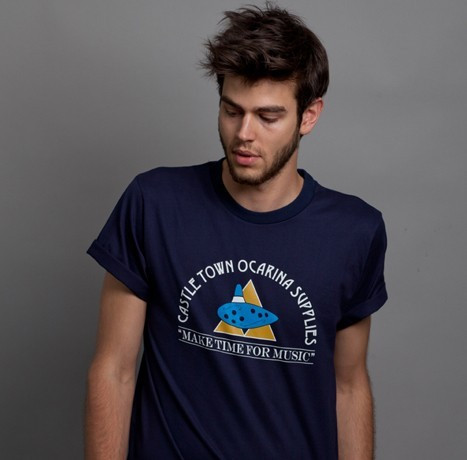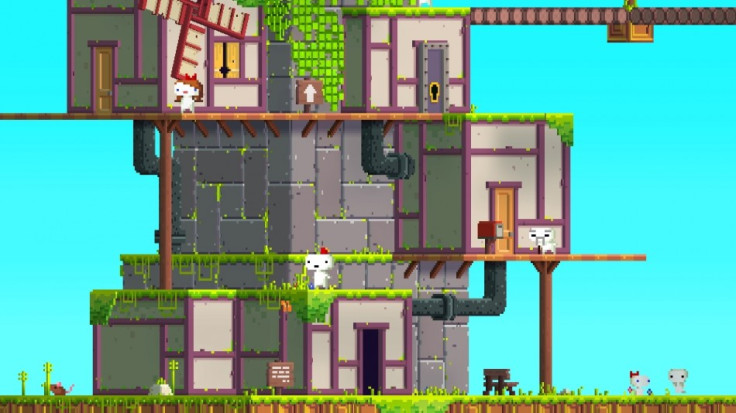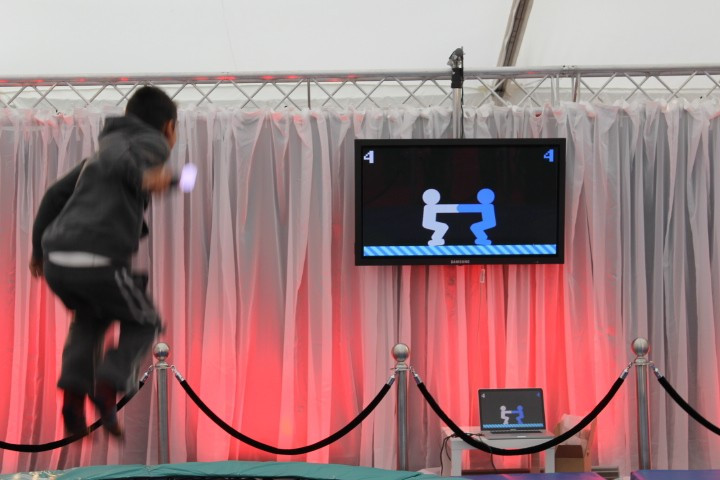Why Games Matter Blog - GameCity, Where Games Are For Everyone
A blog dedicated to big issues affecting the games industry
GameCity, Where Games Are For Everyone - How festivals like GameCity show the game industry at its best.

I really don't feel like writing this week. Aside from drooling snot out of my nose like a one-year-old and having a body temperature in the upper, I dunno, thousands, the two days I spent at GameCity this weekend have left me wondering whether computer games really need my help.
I started this blog (I've based my whole career, in fact) on the proviso that computer games were pretty much buggered. The criticism was hopelessly jargonised, the fans were insular teenage morons and the subject matter was, well, guns. But after 48 hours of watching mums, dads and kids of all ages playing together at GameCity7, I'm beginning to feel that cynical, moaning whinge-alists like me aren't going to be needed much longer.
Videogames are on the mend.
Trampolines and Minecraft
After arriving in Nottingham on the first day of the festival, it took me a while to actually find GameCity. I knew it was in the city centre, and there were signs dotted around, but when I got to Old Market Square there was nary a game expo in sight. No flashing lights, no machine gun noises; there weren't even women with their bums hanging out.
See, GameCity is a bit different to other game shows. A free to enter, week-long festival, it spans several locations across Nottingham and eschews ticket prices and booth babes in favour of indie games, one-on-one chats with developers and broad appeal.
The problem with shows like Eurogamer is that they push people away; if the pricey admission doesn't dissuade would-be punters, the masses of knowledge that the show assumes almost certainly will. That and all the spotty twirps wearing t-shirts no one bloody understands.

But GameCity is having none of that; wandering into the main tent in the early afternoon, I was greeted by colourful arcade games, trampolines and Minecraft. Without wanting to sound like some Feng Shui loving bum-lobe, the whole vibe was a lot more welcoming.
Mums and dads were doing drawings with their kids; some fella with a microphone was getting people to come on stage and play Canabalt; and there were dozens of people there who I'd never expect to see playing videogames.
Enamoured
In a hastily aborted blog post from a couple of weeks ago, I started writing an imaginary news article from a distant future when games are accepted as art, and where people from all walks of life flock to galleries to play them. GameCity, it seemed, was as close to that massively pretentious personal fantasy as I could imagine. Right from the off, I was enamoured.

And it only got better. The games themselves were as bright and interesting as they were universally accessible, with funny mobile cuts like Winter Walk, and Uncharted/Twister hybrid Mega GIRP drawing in players by the queue load.
See, my main worry on the train journey up was that, in chasing non-gamers, the GameCity program would fall victim to light, frothy, Wii Bubble Bath type games that are easy to play, but ultimately disposable. Not so. There's enough artistic weight behind GameCity's line-up to pique anyone's interest, be they industry veteran Mike Bithell, who was there to present advice on working in games, or Lucy Kellaway, Financial Times columnist and proclaimed non-gamer who sat on the GameCity Prize judging panel.
Kellaway's story is perhaps the best argument of all for GameCity. In preparation for her turn on the panel, she admitted in the FT to really having only played Mario, and not liking it much. Of impervious indie demi-God Fez, she wrote:
"This may be part of the reason there is so little cultural discussion of video games: there simply isn't much to talk about. Fez is pretty and ingenious but it's not exactly Proust. It's not even JK Rowling."
Thereby highlighting in one fell sentence exactly where games are going wrong. But gamers, you know, those insecure types who think that criticising Borderlands 2 for not being funny means you "shouldn't be reviewing games", wouldn't stand for that, taking to Twitter to sling digital poo at Kellaway until they were certain that they'd silenced her voice for good.

It's that kind of reaction that GameCity wants to discourage. Games are at a tipping point: Thanks to the billions of dollars that are spent on the ruddy things each year, grown-ups are finally starting to take notice. The games as art debate is still raging, too, in magazines, blogs and even universities. What's needed now is some mainstream media coverage, some input from people like Lord Putnam, who chaired the GameCity Prize panel, and Lucy Kellaway, whose unclouded perspectives on Fez and Mass Effect provided some of the most insightful games criticism I've read this year.
Mainstream acceptance
And the gamers want it too, even if they don't know it yet. Sure they can get their joystick in a twist whenever somebody pans an industry darling like Fez, but they're also the first to complain that games aren't being taken seriously. On the one hand, people seem to get miffed at the Wii for letting their mums play games, and on the other, they're scrambling to talk up games like Journey and Limbo so that the grown-ups and the outsiders will finally start to listen.
GameCity settles those anxieties. It's accessible to everyone, and brainy at the same time; there's no way it'll make you scared of games, but it still wants to challenge you, too.

As gaming veers towards mainstream acceptance, it's important for the industry to maintain its dignity and its core values. GameCity shows that we can have it both ways, that games can still be our precious art works, but that our grans can play them too. A place where games are for everyone, that's the dream. GameCity might just be that place.
© Copyright IBTimes 2025. All rights reserved.






















